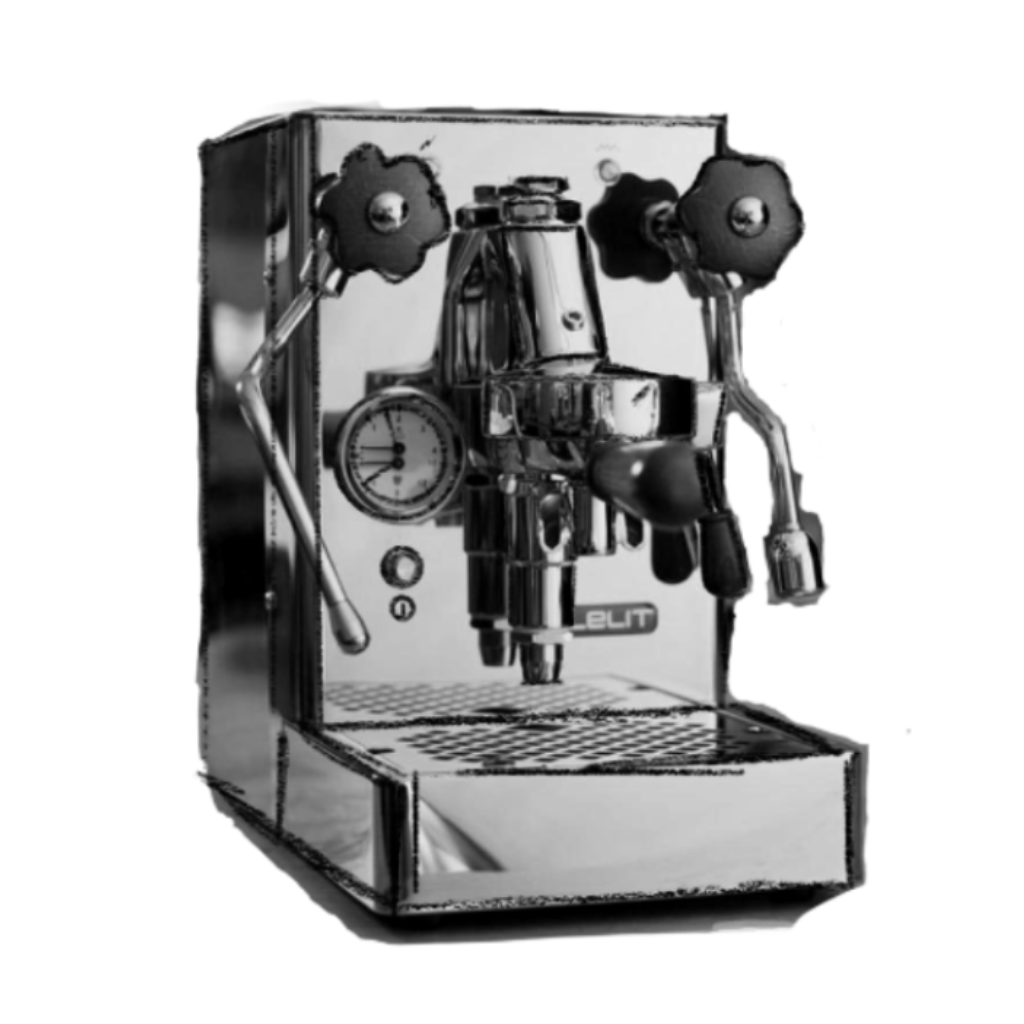What Is Espresso? (2024)
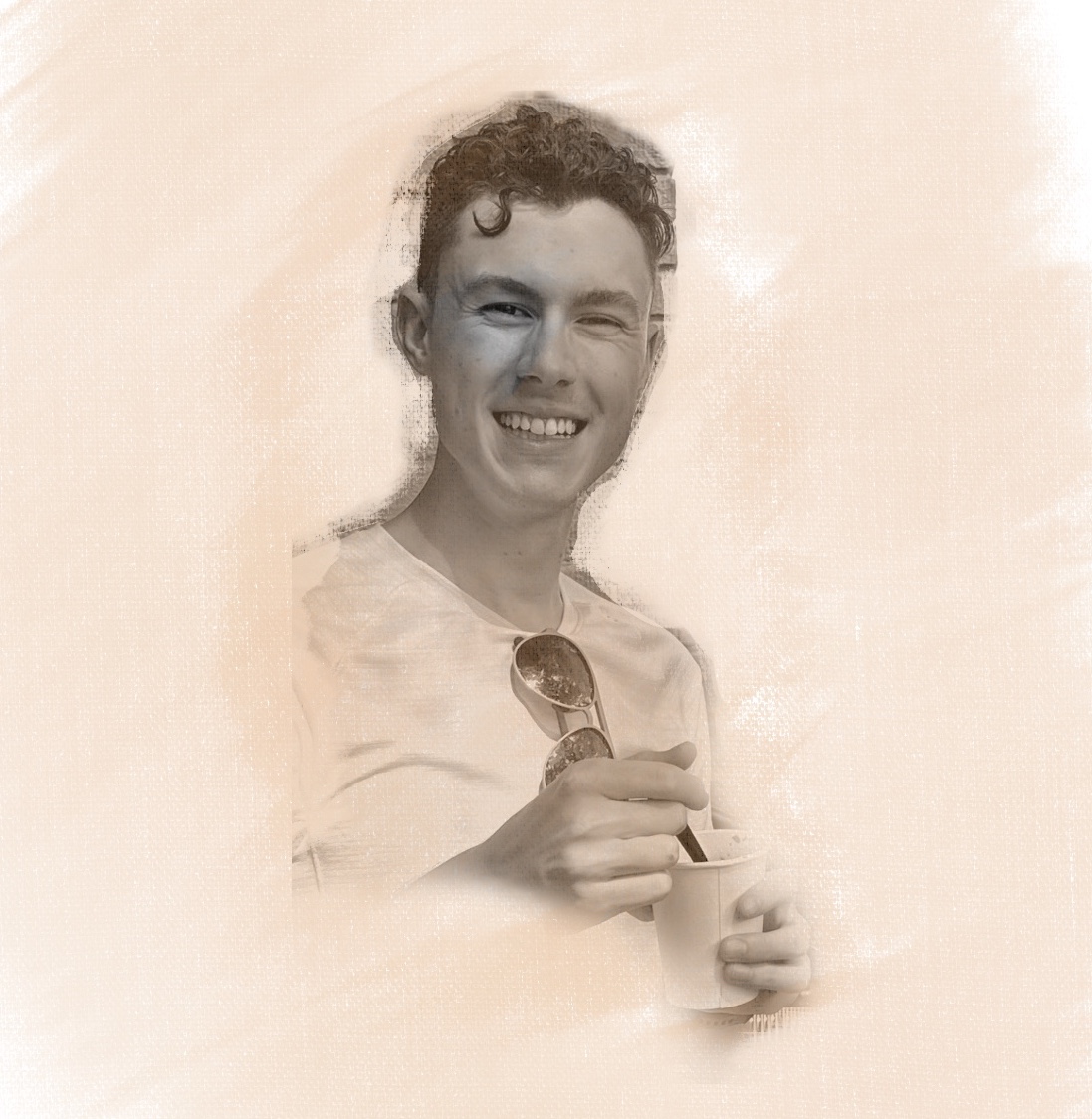
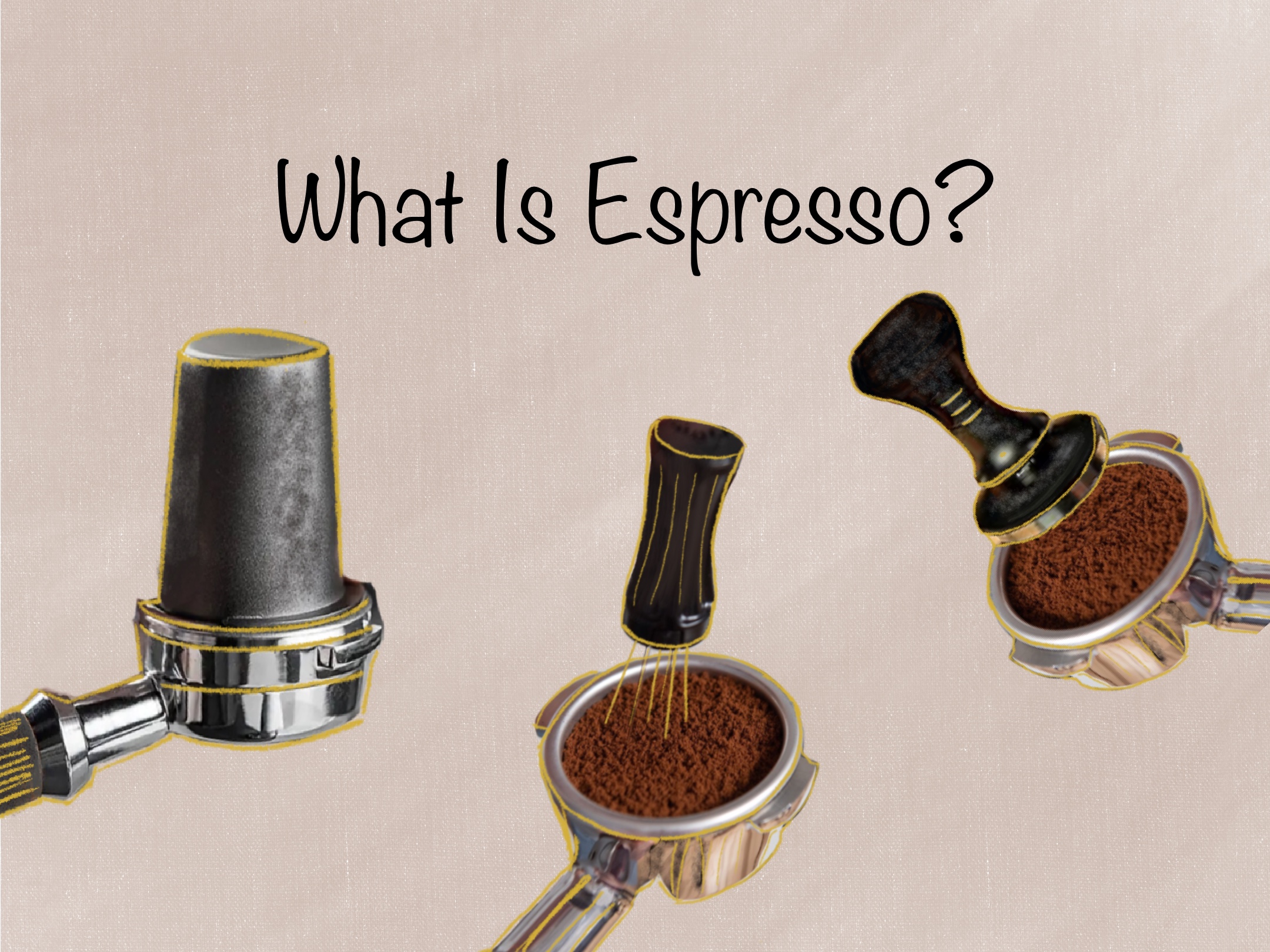
Introduction Espresso (es-Press-oh) is a rich, highly concentrated form of coffee brewed by forcing pressurized hot water through finely-ground coffee beans. The term 'espresso' is commonly used to refer to both the high-pressure brewing method as well as the resulting drink, which may also be called a shot of espresso. Espresso is a unique character in the world of coffee - with a rich history, unique brewing process, and nearly unlimited drink combinations (did someone order a Starbucks Secret Menu Unicorn Frappuccino?).
This blog post will share a brief history of espresso, break down exactly how to make espresso, explain the basic types of espresso machines, and highlight popular drinks you can make with espresso.
Table of Contents
A Brief History of Espresso
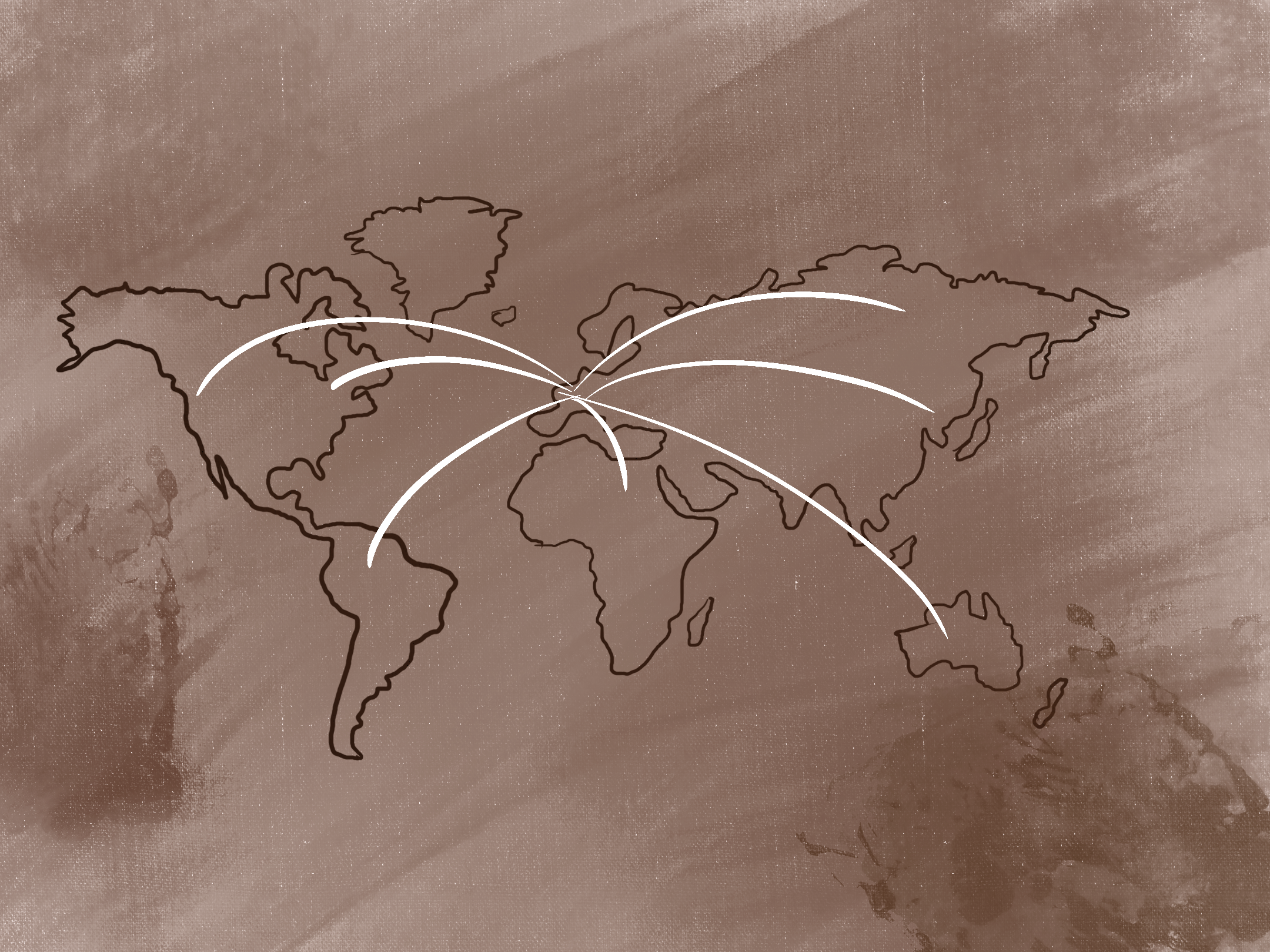
The creation of espresso can be traced back to the early 19th century. While the invention of the drink is commonly credited to Italian inventor Angelo Moriondo in 1884, the first espresso machine was actually invented in 1822 by Frenchman Louis Bernard Rabaut. Moriondo, however, was the first Italian to create and patent a steam-driven "instantaneous" coffee beverage-making device. By the turn of the century, Italian inventors Luigi Bezzera and Desiderio Pavoni created and patented several improved espresso machines, each with a distinctive pressurization feature. To this day, Bezzera and La Pavoni represent two staples in the espresso industry - offering a wide range of home and commercial espresso machines.
The subsequent years saw various advancements in machine technology, which, combined with industrialization and urbanization, led to a significant rise in the popularity of espresso. By the mid-20th century, espresso was synonymous with Italian culture, and the flow of Italian immigrants to the United States paved the way for an explosion in the drink's popularity in North America. Over the years, espresso has continued to grow in popularity worldwide. It has become an integral part of global coffee culture, cherished for its robust flavor and usage as a base for many coffee drinks.
So, What is Espresso?
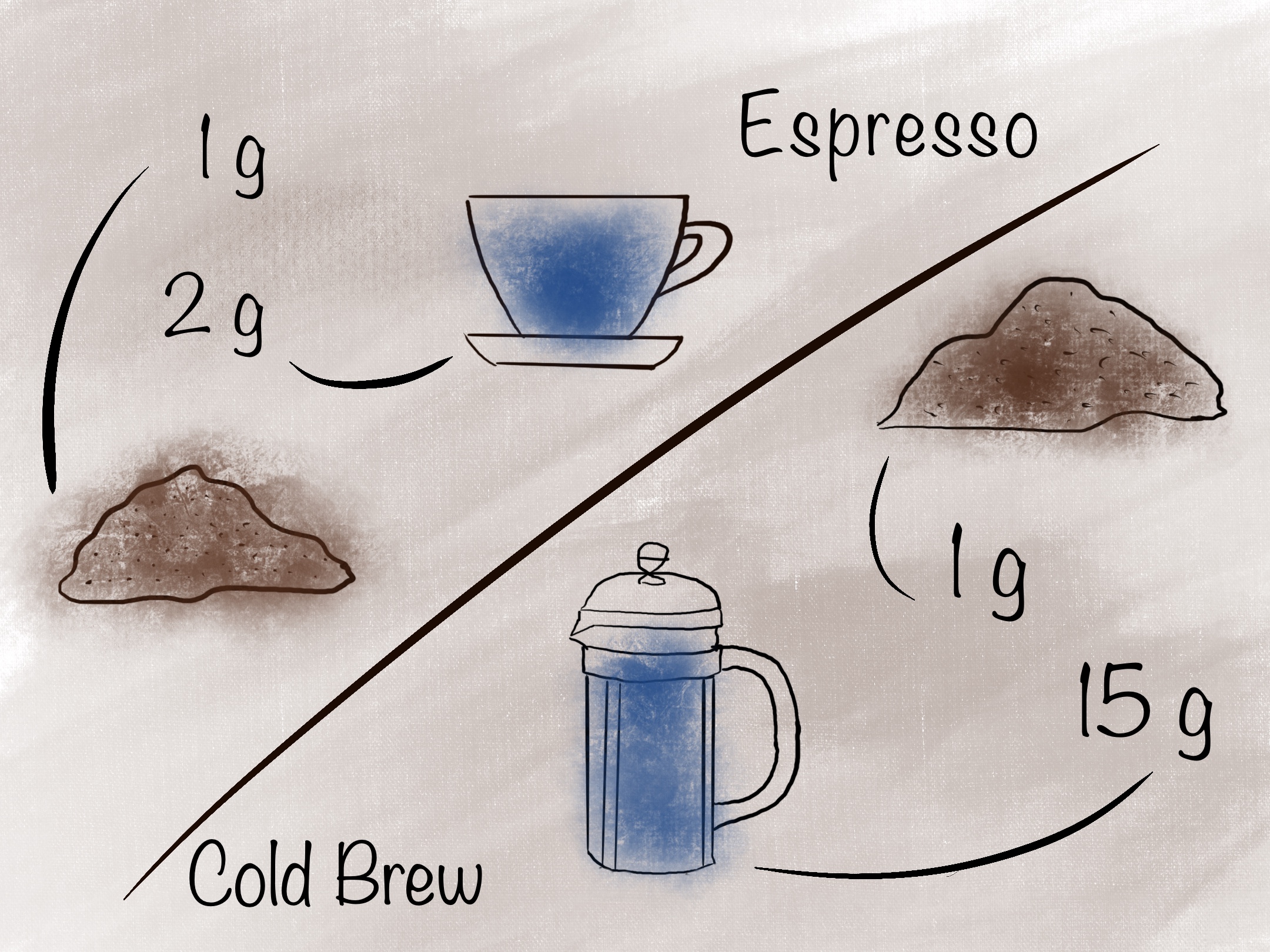
Espresso
Espresso - the drink - is a highly concentrated form of coffee often served as a 'shot' either by itself or as a base for other coffee drinks such as an americano, cappuccino, or latte.
Highly Concentrated
Espresso is considered highly concentrated because it has a high ratio of coffee to water - approximately 1 part coffee for every 2 parts water - a 1:2 ratio. Alternate forms of coffee, such as cold brew, may use only 1 gram of coffee for every 15 grams of water, resulting in a 1:15 ratio. As espresso is highly concentrated, it is usually only brewed in 1-2 ounces (oz), whereas a cold brew may be consumed in 8-12 oz. This small amount of espresso is referred to as a 'shot.'
The Shot
Pulling a shot of espresso involves subjecting coffee beans to high temperatures and pressures for a short duration. This process gives espresso unique characteristics not found in other brewing methods. Espresso is characterized by complex flavors ranging from floral and fruity to chocolaty and nutty. A 'Crema' of delicate foam sits on top of the shot, adding texture and depth to the drink.
How to Make Espresso
Espresso is made with the same coffee plant used in other brewing methods and is often grown, processed, and even roasted in the same way. Espresso is unique because it is brewed by subjecting the coffee beans to hot water at high pressures for a limited time. An espresso machine creates an environment in which hot water is forced through the coffee beans to create pressure and extract the coffee into the water, resulting in a delicious cup of coffee.

Step 1: Selecting the Bean
The first step in creating good espresso lies in preparing the coffee beans. Good espresso can be made with the same type of beans as other brewing methods. Still, many coffee roasters often sell coffee explicitly roasted for espresso to complement the unique and complex flavors extracted through the shot-pulling process. The most crucial factor is to use beans roasted within the last 2 weeks and purchased as the whole bean.
Step 2: Grinding the Coffee
Coffee starts to lose flavor within 20 minutes of being ground due to oxidation, that is, oxygens interaction with the fine coffee particles turning the natural sugars and soft acids into acrid bitterness. As a result, the best espresso is made with fresh coffee that is ground immediately before brewing. While any coffee grinder can work, to get the best espresso, we recommend using an espresso-specific grinder capable of creating uniform grinds fine enough to make the pressure required for proper extraction.
Step 3: Preparing the Puck
Espresso is extracted through a 'portafilter.' Literally a hand-held portable filter, the portafilter holds the ground espresso and slots into an espresso machine before hot water is pumped through the grounds and pushed out the bottom of the portafilter. Before extraction, the ground coffee must be transferred from the grinder into the portafilter and tamped. Tamping is the process of compressing the loosely ground coffee that sits the portafilter into a tightly packed 'puck.' The finely ground coffee pressed into a puck provides resistance against the hot water and creates the high pressures needed to pull a shot of espresso.
Step 4: Pulling the Shot
Once the coffee has been ground, the grinds tamped, and the puck prepared, it's time to pull a shot of espresso! The portafilter holding the puck is slotted into the espresso machine and locked in position. The portafilter must be locked into place so that the puck of coffee does not move when subjected to high-pressure extraction. The espresso machine is activated, and hot water is forced through the puck pushing the espresso out the bottom.
A proper shot of espresso is brewed at 9 bar - that is, the resistance provided by the puck of coffee against the water creates pressures in excess of 9 times the pressure in our atmosphere. This pressure extracts the complex and delicate flavors of coffee in an extremely short amount of time. A standard shot of espresso is extracted in 15 to 35 seconds and yields anywhere between 1 and 3 oz of espresso. The result is a bold, flavorful, and delicate shot of espresso that can be consumed immediately or used as the base for many other drinks.
The Espresso Machine
While espresso has existed for hundreds of years, pulling a shot is still complex and highly precise. As a result, many different espresso machines have been made to perfect the process and pull consistent, repeatable, and delicious shots.
Manual Espresso Machines
Manual machines are the most straightforward type of espresso machine. These machines often only provide a mechanism for creating 9 bar pressure, most of which require some human interaction. These machines range from pump-based machines like the Cafelot Robot to lever-activated machines like the Flair 58, or temperature-activated machines like the 9Barista. While these machines may not have all the bells and whistles, they are known to create high-quality espresso at an affordable price.
Semi-Automatic Espresso Machines
Semi-automatic or 'semi-auto' machines make up the majority of the home-espresso market and build upon manual machines to add a variety of useful functionality. Semi-automatic machines almost always have integrated pumps to heat and push water through the coffee puck, and often come with other features such as steam wands for creating milk drinks or hot water dispensers for creating americanos or tea. Semi-automatic machines encompass a vast range of products ranging from the community favorite Gaggia Classic Pro to the La Marzocco Linea Mini, which may require a second mortgage to afford. With virtually all semi-automatic machines, human interaction is required to grind the coffee and prepare the puck before extraction.
Super-Automatic Espresso Machines
Super-automatic machines comprise a large portion of the home-espresso market and are often marketed as a 'do-it-all' or 'press-and-forget' type of machine. Super-automatic machines often have built-in grinders that take the beans and automate the process from grinding to extraction and even steaming milk drinks. Some super-automatic staples include the Jura Z10 and the DeLonghi Dinamica Plus. While these machines greatly simplify the home espresso process, espresso purists will say they leave much to be desired regarding control and flavor.
Types of Espresso Drinks
Espresso can be made into various drinks and consumed by itself, as part of a milk-based drink, or even as part of an espresso martini. The standard espresso drinks you may see at a cafe or make at home include
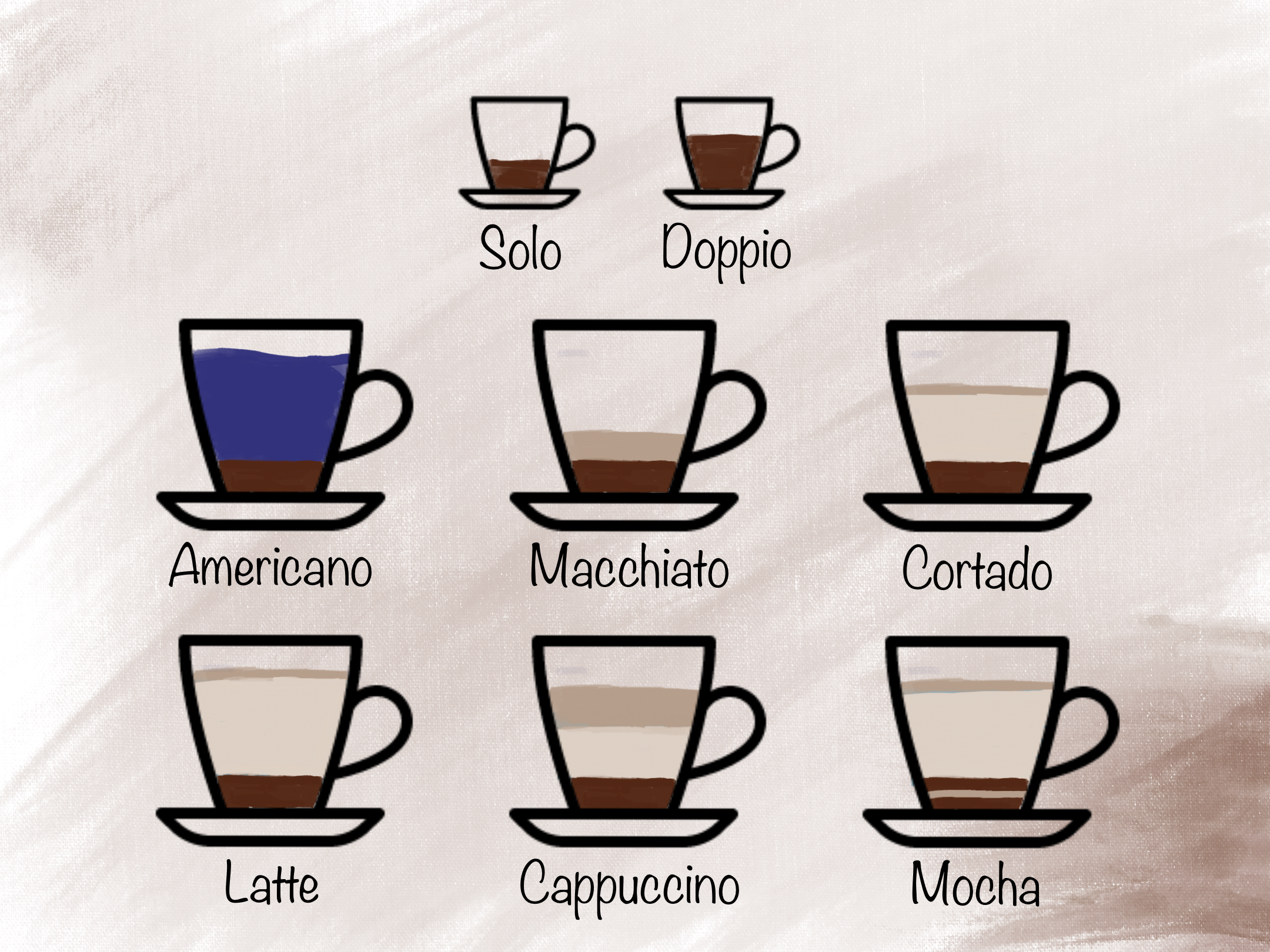
The Espresso Shot
A concentrated shot of espresso is drank by itself directly after extraction. A shot of espresso is strong and flavorful and gives no opportunity to hide a poor extraction. An espresso shot is most often served as either a single or 'solo,' which uses 7-9 grams of coffee and yields ~1 oz of liquid, or a double or 'doppio,' which uses 14-18 grams of coffee and yields ~2 oz of liquid. A single shot will contain 30 to 50mg of caffeine, while a double shot will contain 60 to 100mg. A glass of water often accompanies an espresso shot to help balance the intense flavors.
###The Americano An americano is a simple espresso-based drink combining a single or double espresso with hot water. The water added to create an americano provides a diluted flavor and is similar in strength to drip coffee. An americano is often complemented with sugar or milk.
Macchiato
Originating from macchia, Italian for stain, the macchiato is a shot of espresso stained with a small amount of steamed milk or foam. Slightly less intense than pure espresso, the macchiato presents bold flavors and a more creamy texture. A macchiato has a 2:1 ratio of espresso to milk.
The Cortado
Cortado, coming from corta, Italian for short, is a balanced drink made by adding steamed milk to a shot of espresso and cutting it short before the drink turns into a latte. A cortado has a 1:1 ratio of espresso to steamed milk. This variation provides a smooth and mellow flavor without diluting the natural flavors of the espresso.
The Latte
A latte is among the most popular milk-based drinks and is created by adding a healthy amount of steamed milk and a thin layer of foam to a double shot of espresso. A latte is smooth in texture and gentle in taste with a 1:4 or 1:6 ratio of espresso to milk.
The Cappuccino
This classic Italian drink consists of equal parts espresso, steamed milk, and foam. A cappuccino creates a harmonious blend of flavors and a frothy texture.
The Mocha
A mocha is the sweeter cousin of the latte and is created by combining a shot of espresso, steamed milk, and chocolate syrup, delivering a rich and indulgent experience with the perfect blend of coffee and chocolate flavors.
The Final Sip
Espresso is a unique player in the world of coffee. From its humble origins in the 19th century to its rise to worldwide popularity, espresso is at the heart of many of our favorite caffeinated drinks. Whether you prefer a macchiato's simplicity or a mocha's delicious sweetness, making espresso is the perfect ritual to wake up and start your day.
